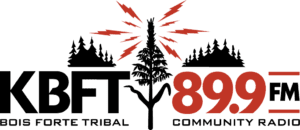The Men’s Society of the Saginaw Chippewa Tribe carry boxes holding ancestors and funerary objects to the Nibokaan (Place of Sleeping) Cemetery for reburial on tribal homelands in Michigan. Photo by Marcella Hadden / Niibing Giizis Photography (Courtesy National Park Service)
The new administration of President Donald Trump continues to send conflicting messages about a controversial freeze on federal funds, resulting in ongoing uncertainty for Indian Country.
In an update on Thursday morning, the National Association of Tribal Historic Preservation Officers (NATHPO) confirmed that federal funding has been put on hold since Trump took office a week ago. That means that tribes cannot access grants to protect their ancestors, cultural property or sacred sites.
NATHPO traced the funding freeze to a memorandum issued by the White House Office of Management and Budget (OMB) on Monday. The controversial directive was defended by Trump’s team on Tuesday as a legal and appropriate exercise of the 47th’s president’s authority.
“The memorandum said all Federal agencies were required to identify and review all Federal financial assistance programs and supporting activities to make sure they are consistent with President Trump’s policies and requirements,” NATHPO said in its update.
“Because the funding THPOs receive from the Historic Preservation Fund are grants, that funding was paused,” NATHPO confirmed, referring to the Tribal Historic Preservation Offices (THPOs) that receive government funds.
This is NOT a rescission of the federal funding freeze.
It is simply a rescission of the OMB memo.
Why? To end any confusion created by the court’s injunction.
The President’s EO’s on federal funding remain in full force and effect, and will be rigorously implemented.
— Karoline Leavitt (@PressSec) January 29, 2025
But on Wednesday, conflicting actions created new doubts for the trust and treaty obligations of the United States. First, the OMB released a two-sentence document that said that Monday’s contested memorandum has been “rescinded.”
Despite the withdrawal, White House Press Secretary Karoline Leavitt insisted that nothing had changed. In a post on social media, she said Trump’s freeze on federal funds — which she tied to a series of executive orders (EOs) signed by the president — is still the word of the day.
“The President’s EO’s on federal funding remain in full force and effect, and will be rigorously implemented,” said Leavitt, who a day earlier defended the OMB directive during her very first press briefing at the White House.
At the same time, the Department of Justice, in response to litigation about the directive, represented something different. In a filing in federal court Government attorneys said the rescission of the OMB memo makes the legal dispute “moot” — meaning the case is all but over. They attached a copy of the withdrawal in support of the argument.
So even though a federal judge in Washington, D.C., has not yet ruled on the litigation filed by a group of non-profits, it became apparent that the freeze is very much on the table for Indian Country.
“Although the memo was rescinded on Wednesday, there is still a lack of clarity if the funding pause is still in effect,” NATHPO said.
The National Park Service (NPS), which is part of the Department of the Interior, provides federal grants to Tribal Historic Preservation Offices. The money comes from the Historic Preservation Fund, and has been authorized by the U.S. Congress through various laws, according to the agency.
“Grant funding assists THPOs in executing their tribe’s historic preservation programs and activities pursuant to the National Historic Preservation Act of 1966, as amended, and other relevant laws,” the NPS website states.
Despite the authorization from the legislative branch of the U.S. government, the White House included the Historic Preservation Fund Grants in its lengthy list of targeted programs. Also included: federal funding at NPS to help tribes, museums and other institutions follow the Native American Graves Protection and Repatriation Act and return tribal ancestors and cultural property to their rightful places. [PDF: Instructions for Federal Financial Assistance Program Analysis in Support of M-25-13]
“NATHPO is committed to supporting sovereign Tribal Nations as they exercise their trust and treaty rights to protect and preserve cultural resources and sacred places,” NATHPO said in its update on Thursday.
President Trump has not named his pick to lead the NPS. During the administration of former president Joe Biden, a Democrat, the agency was run by Chuck Sams, a citizen of the Confederated Tribes of the Umatilla Indian Reservation who made history as the first Native person to serve as director.
Doug Burgum, a former governor of North Dakota, has been tapped by Trump to lead Interior, the cabinet-level department with the most trust and treaty responsibilities in Indian Country. He has not yet been confirmed by the Republican-led U.S. Senate, although approval is expected by the chamber as soon as Thursday.
A lack of confirmed leadership at Interior has tribes “on alert” to ensure that the nation-to-nation relationship is still being honored in D.C. One tribal leader said he turned to a member of Congress for assurances about federal funding.
“I spoke personally with our congressman, Nick Langworthy, about this issue,” President J.C. Seneca of the Seneca Nation said of the Republican who represents the 23rd Congressional district in New York.
“The congressman indicated that he would contact the U.S. Interior Department directly to make sure that Seneca Nation funds are not being targeted,” the tribe’s leader said in a news release on Wednesday. “He got back to us quickly and we are appreciative of his efforts.”
Before leaving office, former NPS Director Sams issued the agency’s first-ever order regarding consultation with tribal nations. The directive requires that Indian Country be given notice in advance and be given timelines on any action that might affect their interests.
In announcing the order last November, the NPS said the agency signed 27 new agreements with Tribal Historic Preservation Offices since January 2021, when Biden took office.
Since then, more than $77 million was distributed to support historic and cultural preservation work in Indian Country by directly funding THPOs, according to NPS.
Additionally, the NPS said more than $10.4 million had been awarded in NAGPRA grants to tribes, museums and institutions since 2021. NAGPRA has been been on the books since 1990. It was signed into law by then-president George H. Bush, a Republican.


